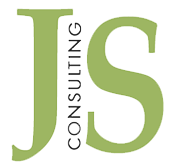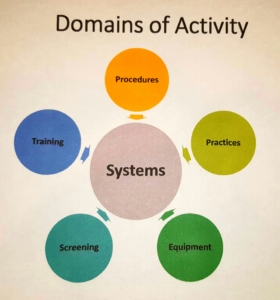Improving performance in an early child development or childcare center is like building a snowman. My children were making a snowman during our last Colorado snow. It was one of those rare opportunities where I could secretly observe from the kitchen window. I saw each of my daughters using their unique strengths to contribute to their project. One utilized her creativity to guide the overall design and outcome. The other applied her ingenuity to re-purpose components from the available materials. Finally, they sought me out because I had the added strength and height necessary to help lift the large spheres into the form of an upright snowman. This project engaged collaboration across several domains of activity to complete the “largest snowman ever!” The same applies to developing the healthiest and safest early childhood education or childcare program ever.
New Standards
Since the new Head Start Program standards were approved in November 2016, I have gone through them, asking myself the question, “How can I use these standards to assess the effectiveness of health and safety operations at an early childhood education program or childcare center? Although the new standards are more dynamic than the old and allow flexibility to sustain relevancy at the program and community level, this makes their assessment more complex than the former “check list” of dos and don’ts. The Head Start Program Standards Final Rule: General Fact Sheet does a great job of summarizing the differences between the old and new.
The new standards require programs to implement a system of health and safety policies, practices, and procedures that includes ongoing training, oversight and correction, and continuous improvement— “They give programs greater flexibility to adjust their policies and procedures according to the most up-to-date information about how to keep children safe.” With this systems approach comes a greater burden of proof for the program to assure its staff and community that it is adequately protecting health and safety. They must be able to articulate those health and safety threats that are of most concern through the community assessment process, design and maintain systems that are relevant and effective in preventing them and can easily adjust to take on new issues as they emerge.
State and Local Standards
There are still local and state rules that will continue to govern programs and centers. The new federal standards acknowledge this and therefore have moved from the checklist to systems approach to reduce duplication and confusion between potentially conflicting regulations and checklists. However, it is important to note that the presence of these regulatory systems does not replace the need for effective health protection systems within each program or center. I suggest that even early childhood education centers that are independent of the Head Start grant program could greatly benefit from the systems approach outlined in the new Head Start standards. They are a well-thought out and heavily vetted guide for any practitioner on what systems are most important for the protection of children, families and communities within the early education and childcare setting.
Key Performance Areas
The Head Start Program Performance Standards divide health and safety into eight distinct sections within Subpart D. I refer to these as key performance areas. making them easy to reference for both reviewers and programs. The key performance areas are program functions that have traditionally existed in Head Start programs. They are:
- Health and safety;
- Collaboration and communication with parents;
- Child health status and care;
- Oral health practices;
- Child nutrition;
- Child Mental Health and Social and emotional well-being;
- Family support services; and
- Safety practices.
Domains of Activity
Key performance areas are a great way to describe the scope of work that programs perform in respect to health and safety. They are familiar to most and therefore don’t require much explanation. However, with the new required approach, I find it helpful to look at activities that are necessary to support across all eight performance areas. I have identified six domains of activity—actually, one core domain of activity that is supported by the other five. In other words, programs must be busy with these activities in order to be successful in helping our children and families maintain healthy and safe.
The domains of activity are:
- Systems— Core to the success of any of the key performance areas is having necessary systems in place.
- Procedures–The organization has procedures in place that assure the health and safety of each child.
- Practices— Supportive and protective practices are in place to assure the health, safety and well-being of each child.
- Equipment–The organization supplies and utilizes equipment that meets appropriate design standards; prevents injury; and supports hygienic practices.
- Screening—The organization screens and monitors for specific high-risk indicators to assure the safety of each child under their care.
- Training–The organization trains its staff to develop and maintain their competency in health and safety.
The Domains of Activity give me a framework from which to assess program operations for each of the performance areas as well as across the entire organization. With this framework, one can begin to develop checklists with which to evaluate and monitor program performance. You say, “What? Checklists still?” Checklists are not a bad thing even though they bear a negative connotation in most circles. In reality, most normal people need lists to break down their work into manageable pieces. I try to go to the store without one and I come back inevitably without some of the things I needed and a whole lot of stuff that I didn’t—Checklists rule!
Checklists Rule!
Whereas the old standards provided us with a checklist, the new standards behoove us to develop our own checklists. It lays out performance areas and activities but it leaves it up to the program, for the most part, to determine what those systems, procedures, training, etc., should look like to best meet the needs of its own community. I am a firm believer that the program should and usually does know what the community needs and therefore can best determine what they need to do to address those needs.
Here’s the rub with the new approach that supports this concept—The program now has a responsibility for developing its own checklists. The burden of proof is on each program to demonstrate that they are active in the right things and that those things are systematically effective and relevant for their community and ultimately be able to articulate how such is true. This could be overwhelming but I hope that an overlay of Domains of Activity can help break this challenge down into manageable pieces. So with that I conclude with a call to action.
Call to Action!
I challenge programs to develop your check lists by doing the following:
- List or highlight from your copy of the Head Start Program Standards, Subpart D, any items that fit into one of the six Domains of Activity. This is a good start to developing your new checklists.
- Download my checklist. If you don’t have time to develop your own, I’ve already done it for you. Download my Domains of Activity Checklist from the Early Childhood Health and Safety Resources page!
- Discuss and take notes. Once you’ve developed—or downloaded—your Domains of Activity checklists start discussions with your staff, governing board and families about them. For each item, ask yourselves “Who?”, “What?”, “Where?”, “When?”, “How?” and “Why?” Don’t forget to take good notes when you do this as the answer to these questions will help you begin to articulate how you have engaged the new standards in an effective and relevant way.
I hope this is helpful for my colleagues in Head Start programs and other early childhood development programs. Please, comment with your thoughts about this framework. I fully expect to modify it moving forward as I learn from my colleagues in the real world.





Leave A Comment